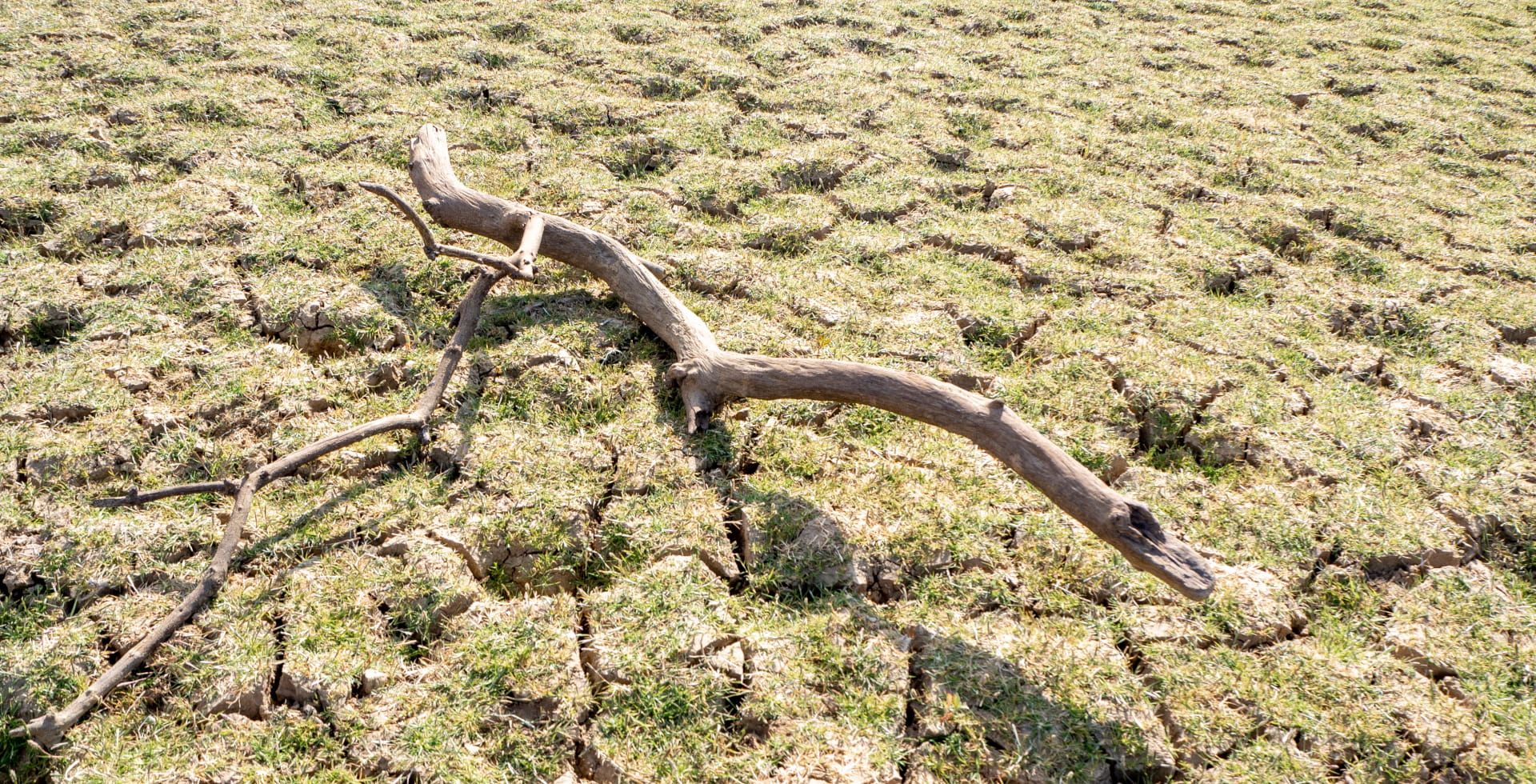As commodity investing gains momentum, industrial metals may offer better opportunity

Summary
The invasion of Ukraine has shone a light on investing in commodities. Due to potential disruptions to Russia’s significant supplies of energy-related raw materials, commodities have regained favour amongst investors, with most of the attention focused on oil and gas. Read why Global CIO Multi Asset Gregor Hirt and Senior Portfolio Manager Frederik Fischer believe investors may be overlooking another important aspect of the current commodity cycle: industrial metals.
The invasion of Ukraine by Russian armed forces has shone a light on investing in commodities. Due to potential disruptions to Russia’s significant supplies of energy-related raw materials, the asset class – which had previously been languishing for a protracted period in the doldrums – has regained favour among investors, with most of the attention focused on oil and gas. In fact, many experts predict crude oil prices could even top USD 200 a barrel1 in 2022 amid tight supply.
While we do not consider the attention to energy to be misplaced, we believe that some investors may be overlooking another important aspect of the current commodity cycle: industrial metals such as nickel, palladium and aluminium – which are also plentiful in Russia and might face similar disruptions
In addition to supply disturbances, we see two other key factors bolstering the asset class in general – and industrial metals in particular – over the long run: a) industrial metals are crucial in the manufacturing of key components of the clean- energy transition (ie, electric-vehicle batteries); and b) commodities have historically been an effective hedge against inflation in investors’ portfolios, a particularly effective trait when price increases in many developed economies have hit decades-high levels. Additionally, low correlations with equities and bonds mean that commodities can also potentially smooth returns during periods of intense volatility, such as the present (see Exhibit 1).
Exhibit 1: commodities have fared well when inflation is high, can smooth returns
Year-over-year, percentage change

Source: Bloomberg, Allianz Global Investors. Data as at 31 March 2022.
Supply-demand dynamics provide significant tailwind
Supply-demand dynamics, both short and long term, offer a significant tailwind for commodities, in our view. In the short term, the global economy is still only in the early stages of emerging from the economic slowdown caused by the Covid-19 pandemic, boosting demand for commodities. At the same time, the invasion of Ukraine coupled with supply-chain disruptions are hampering the supply of everything from oil to industrial metals.
For many years, the supply side has been starved of capital investment in everything from oil exploration to mining (Exhibit 2) as capital discipline has prevailed in the energy and mining sectors. With new projects such as new oil rigs, shale drilling or metal mines taking years to get from initial investment to production, we see the risk of a significant increase in supply as low.
New supply is also being restricted by factors that open companies up to environmental, social and governance (ESG) risks. For example, new and existing mines are producing falling ore grades. Producing metals from lower-grade ores adds technical complexity to extraction, while processing requires larger equipment and the use of more chemicals. As mining becomes potentially “dirtier”, protests against new mines have grown, amplified by social media.
On the demand side of the equation, commodities – and industrial metals in particular – appear to have a rosy outlook, not least because demand should increase as the energy transition gathers pace. Indeed, many countries in Europe, most notably Germany, have said they want to accelerate their switch to more renewables as part of an urgent strategy to reduce their dependence on Russian gas. Significant planned spending on infrastructure backing the US renewable energy transition also buoys demand. As shown in Exhibit 3, demand is forecasted to be strong for such metals as copper and aluminium in the coming years (current inventories of both these metals are low).
Exhibit 2: weak capital expenditures have restrained commodity supply
Oil rig numbers slowly rising but remain low Big 4 mining capex remains tight

Note: Graph on left shows Baker Hughes US Crude Oil Rig Count, a leading indicator of demand for products used in drilling, completing, producing and processing hydrocarbons. In right-hand graph, Big Four refers to the world’s four largest diversified miners – Rio Tinto, BHP, Anglo American and Glencore – collectively considered a proxy for the industry more broadly.
Source: Baker Hughes, Bloomberg, Allianz Global Investors. Data as at 31 March 2022.
Net-zero transition favours industrial metals
At the 2021 Glasgow Climate Pact, governments globally agreed to accelerate efforts to keep temperatures from rising more than 1.5 degrees Celsius by 2050, admitting that actual progress toward earlier commitments had fallen short of promises. As governments globally redouble their efforts on renewable energy, the road to “net zero” climate emissions should favour industrial metals.
The shift from combustion-engine cars to electric vehicles (EVs) is copper-, nickel-, lithium- and aluminium-intense. A battery-powered EV, for example uses 75 kilograms (165 pounds) of copper vs 20 kilograms (44 pounds) in a traditional car. Solar power, wind power and battery power storage are also tailwinds for metal demand. Photovoltaic cell technology uses metals such as silver, aluminium, copper, zinc and steel, while the deep-sea cables used to bring offshore wind energy back to land require copper, aluminium and steel.
The International Energy Agency estimates demand for lithium used in the batteries that power EVs could expand by a factor of 30 by 2030.2 Demand for aluminium for solar panels was roughly 2.4 million tons in 2020. It is now forecast by the industry magazine mining.com to rise to 4.6 million tons by 2040.
Russia is an industrial metal powerhouse that produces nickel (used in batteries), palladium (a key component of catalytic converters), aluminium (used in such things as battery casings, wind turbine nacelles and blades, and hydrogen fuel cells – as well as for framing solar panels), platinum (used in auto catalysts), steel (used in construction and car manufacturing) and copper (used for making cables and for wiring in EVs, solar panels and wind turbines). Russia accounts for almost 14% of global mineral extraction and produces more than 10% of the world’s nickel, according to Thomson Reuters.
As investors consider exposure to the asset class, however, they should be mindful of potential risks associated with passive strategies. The S&P GSCI Index – the most popular benchmark among passive commodity strategies – is heavily tilted towards energy, with a modest weighting of about 10% to industrial metals. By contrast, the industrial metals weighting in the Bloomberg Commodity ex Agriculture/Livestock Index is about twice as large, leaving it better placed to benefit from the energy transition. Finally, given the ESG risks that are inherent in the industrial metals sector, an active approach can help identify and mitigate such risks.
For investors without commodities in their strategic asset allocation, we believe that industrial metals may offer an opportunity to profit from the structural trend in commodities or hedge part of their inflation risk. For those who already have an allocation that may be overweighted towards energy, now is the time to consider taking an active approach with the goal of enhancing diversification – and potential returns – while investing in this asset class.
Exhibit 3: forecasted demand for copper and aluminium is high

Source: CRU Group, Wood Mackenzie, J.P Morgan Commodities Research. Data as at 31 March 2022.
1 Top oil traders warn prices could breach USD 200 a barrel, Financial Times, 24 March 2022
2 International Energy Agency, Clean energy demand for critical minerals set to soar as the world pursues net zero goals, May 2021
Investing involves risk. The value of an investment and the income from it will fluctuate and investors may not get back the principal invested. The views and opinions expressed herein, which are subject to change without notice, are those of the issuer or its affiliated companies at the time of publication. Certain data used are derived from various sources believed to be reliable, but the accuracy or completeness of the data is not guaranteed and no liability is assumed for any direct or consequential losses arising from their use. The duplication, publication, extraction or transmission of the contents, irrespective of the form, is not permitted.
This material has not been reviewed by any regulatory authorities. In mainland China, it is for Qualified Domestic Institutional Investors scheme pursuant to applicable rules and regulations and is for information purpose only. This document does not constitute a public offer by virtue of Act Number 26.831 of the Argentine Republic and General Resolution No. 622/2013 of the NSC. This communication’s sole purpose is to inform and does not under any circumstance constitute promotion or publicity of Allianz Global Investors products and/or services in Colombia or to Colombian residents pursuant to part 4 of Decree 2555 of 2010. This communication does not in any way aim to directly or indirectly initiate the purchase of a product or the provision of a service offered by Allianz Global Investors. Via reception of his document, each resident in Colombia acknowledges and accepts to have contacted Allianz Global Investors via their own initiative and that the communication under no circumstances does not arise from any promotional or marketing activities carried out by Allianz Global Investors. Colombian residents accept that accessing any type of social network page of Allianz Global Investors is done under their own responsibility and initiative and are aware that they may access specific information on the products and services of Allianz Global Investors. This communication is strictly private and confidential and may not be reproduced. This communication does not constitute a public offer of securities in Colombia pursuant to the public offer regulation set forth in Decree 2555 of 2010. This communication and the information provided herein should not be considered a solicitation or an offer by Allianz Global Investors or its affiliates to provide any financial products in Brazil, Panama, Peru, and Uruguay. In Australia, this material is presented by Allianz Global Investors Asia Pacific Limited (“AllianzGI AP”) and is intended for the use of investment consultants and other institutional/professional investors only, and is not directed to the public or individual retail investors. AllianzGI AP is not licensed to provide financial services to retail clients in Australia. AllianzGI AP is exempt from the requirement to hold an Australian Foreign Financial Service License under the Corporations Act 2001 (Cth) pursuant to ASIC Class Order (CO 03/1103) with respect to the provision of financial services to wholesale clients only. AllianzGI AP is licensed and regulated by Hong Kong Securities and Futures Commission under Hong Kong laws, which differ from Australian laws.
This document is being distributed by the following Allianz Global Investors companies: Allianz Global Investors U.S. LLC, an investment adviser registered with the U.S. Securities and Exchange Commission; Allianz Global Investors Distributors LLC, distributor registered with FINRA, is affiliated with Allianz Global Investors U.S. LLC; Allianz Global Investors GmbH, an investment company in Germany, authorized by the Page 6 of 6 Internal German Bundesanstalt für Finanzdienstleistungsaufsicht (BaFin); Allianz Global Investors (Schweiz) AG; in HK, by Allianz Global Investors Asia Pacific Ltd., licensed by the Hong Kong Securities and Futures Commission; ; in Singapore, by Allianz Global Investors Singapore Ltd., regulated by the Monetary Authority of Singapore [Company Registration No. 199907169Z]; in Japan, by Allianz Global Investors Japan Co., Ltd., registered in Japan as a Financial Instruments Business Operator [Registered No. The Director of Kanto Local Finance Bureau (Financial Instruments Business Operator), No. 424], Member of Japan Investment Advisers Association, the Investment Trust Association, Japan and Type II Financial Instruments Firms Association; in Taiwan, by Allianz Global Investors Taiwan Ltd., licensed by Financial Supervisory Commission in Taiwan; and in Indonesia, by PT. Allianz Global Investors Asset Management Indonesia licensed by Indonesia Financial Services Authority (OJK).
2123132
Groundwater issues: hiding in plain sight

Summary
Every year since 1993, the United Nations (UN) has marked World Water Day on 22 March, shining a spotlight on the importance of fresh water. World Water Day aims to raise global awareness of the more than 2 billion people who, according to UN figures, live without access to safe water, as well as the more than 4 billion people experiencing severe water stress.
Key takeaways
|







